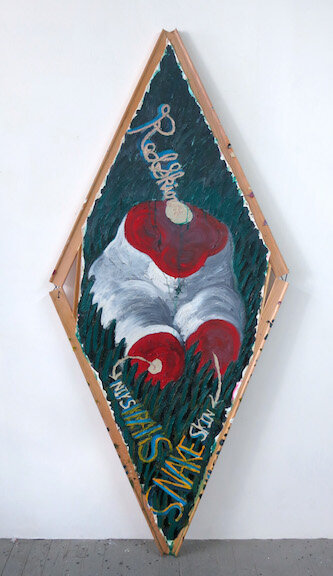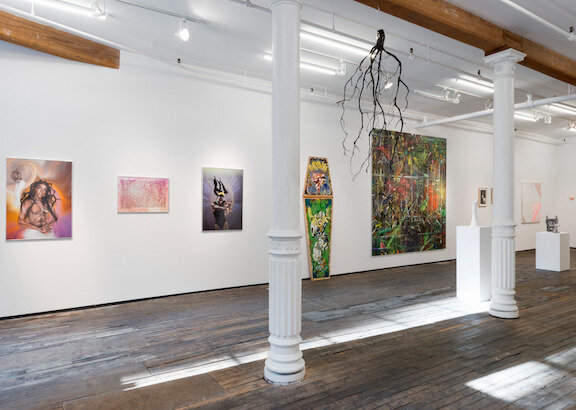
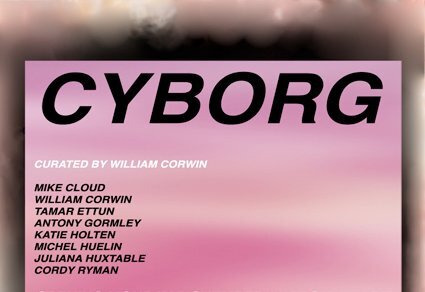
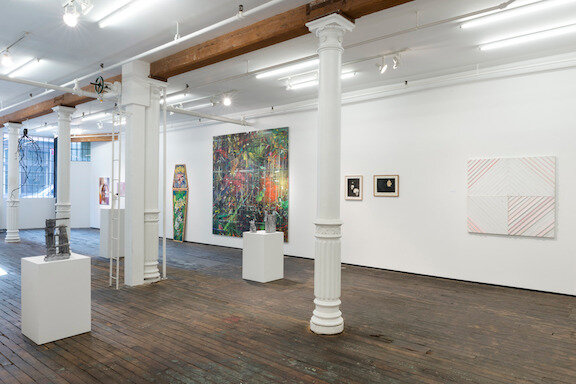
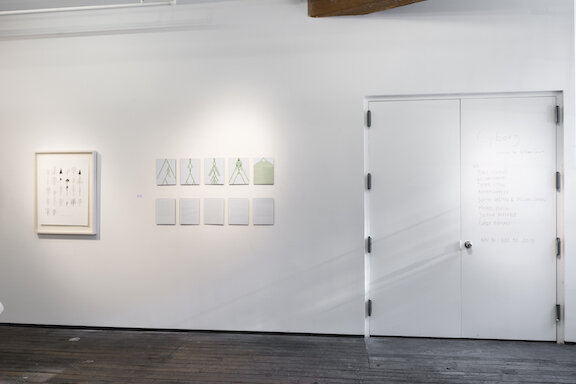
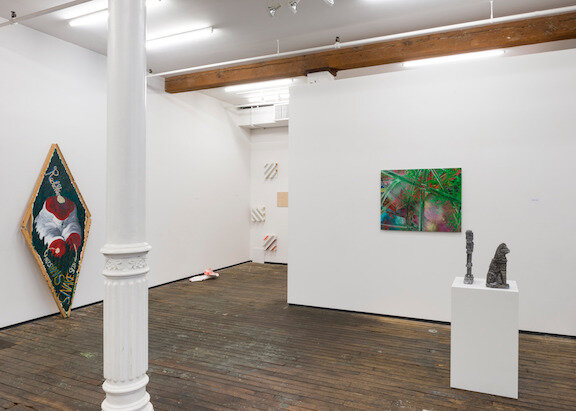
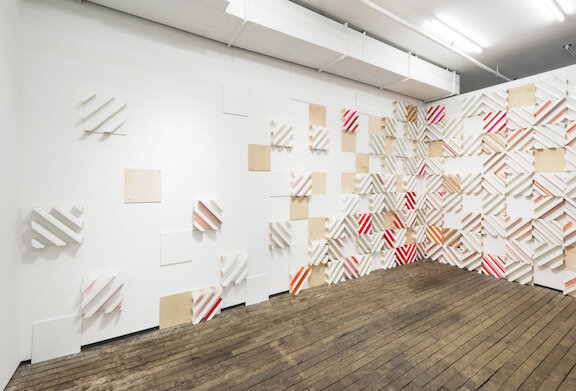
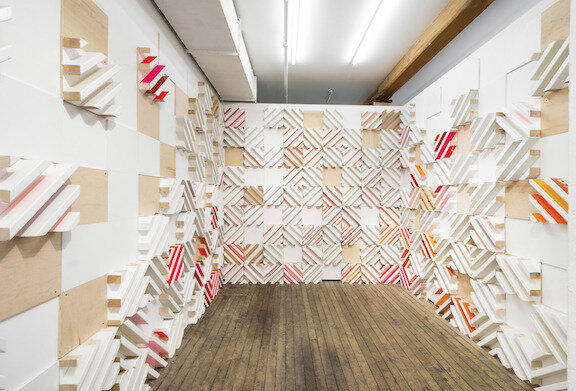


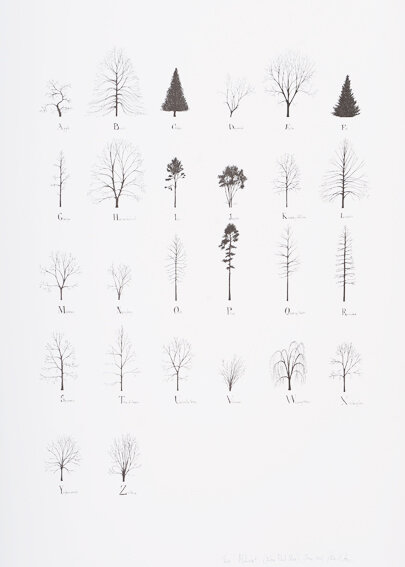
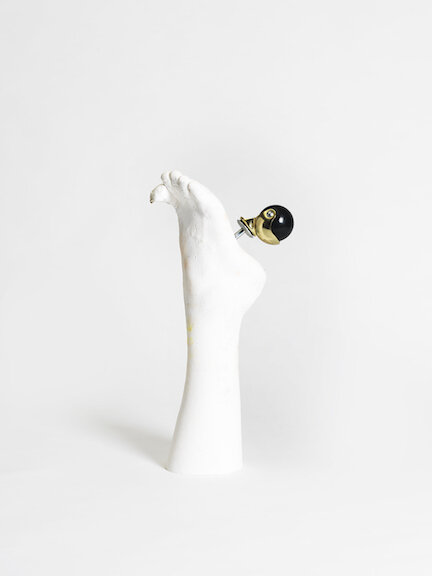
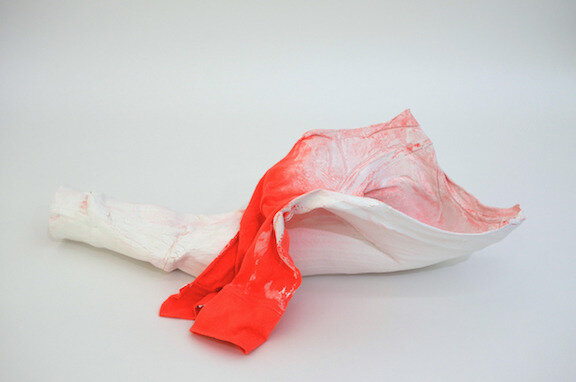
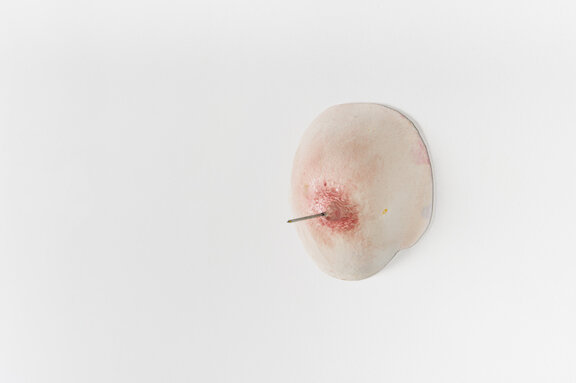

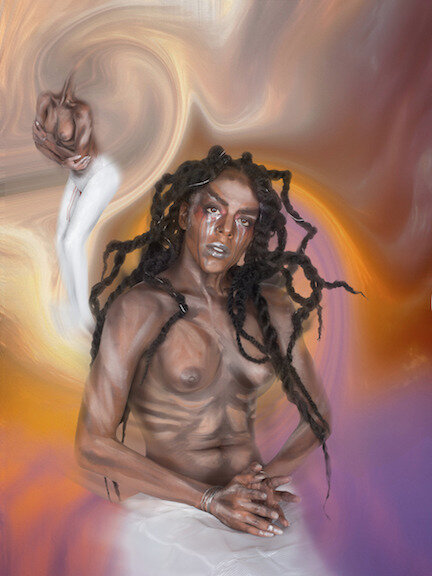
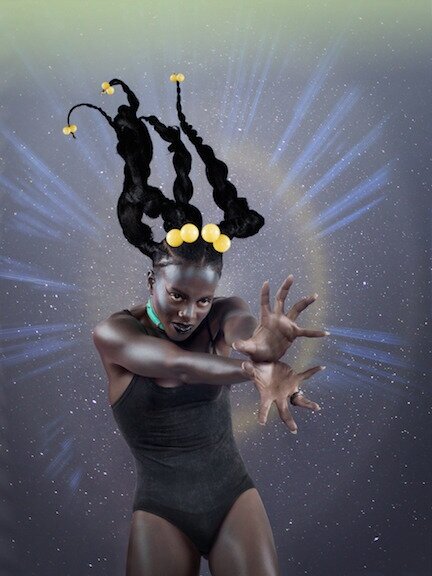
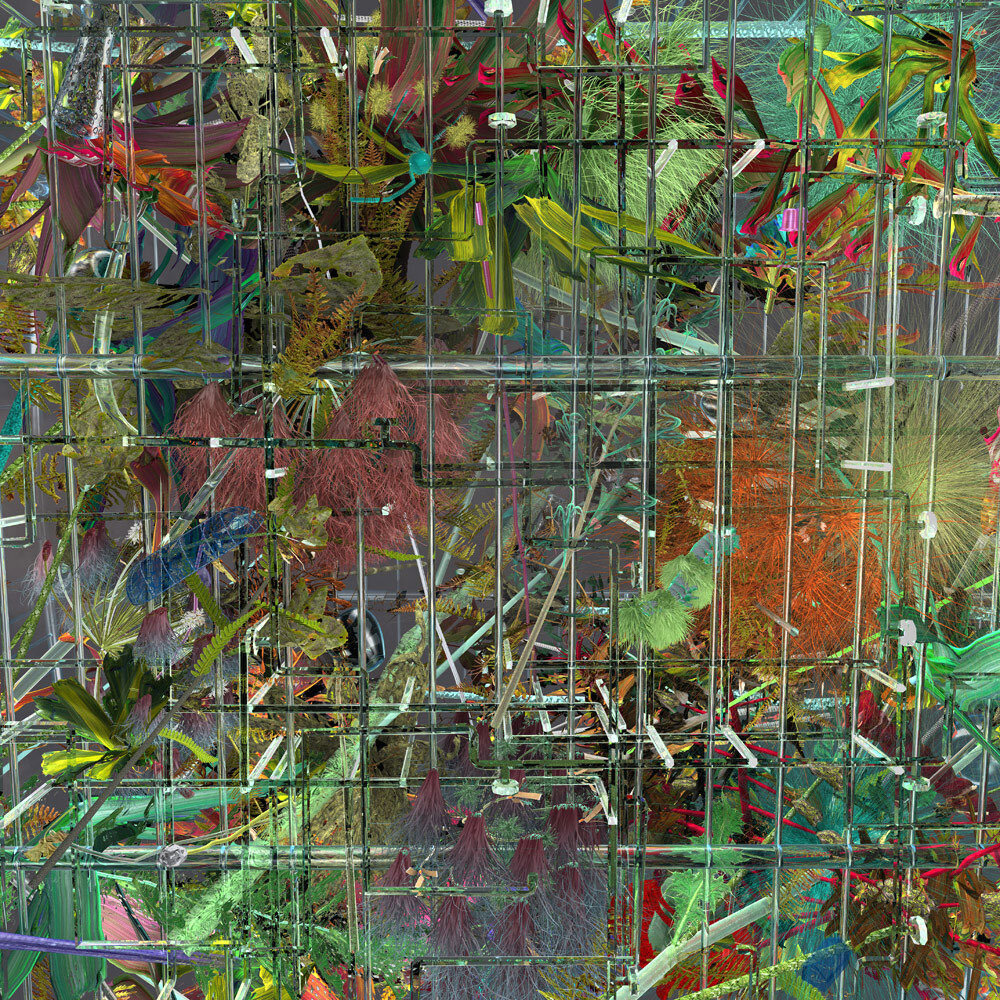
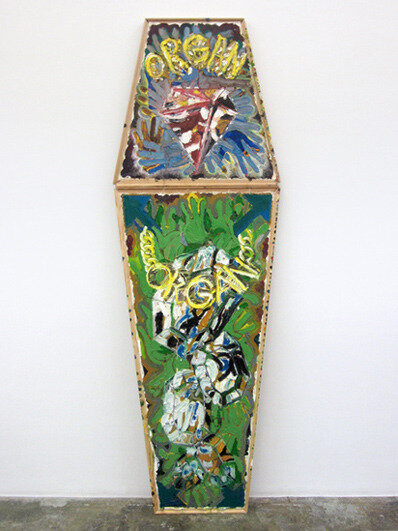
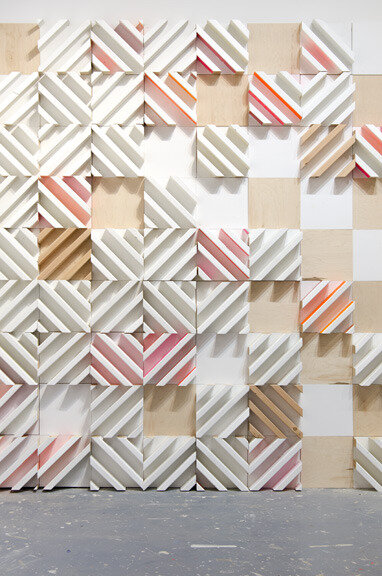
NEW YORK
CYBORG curated by William Corwin
December 1 - 29, 2015
Antony Gormley
Katie Holten
Tamar Ettun
Juliana Huxtable
Michel Huelin
Mike Cloud
Cordy Ryman
William Corwin
In the course of finding artists for the exhibition Cyborg at Zürcher Gallery, I found myself one Friday night in the Crown Heights studio of Juliana Huxtable. I brought up the words of the prophet Ezekiel, and we talked about his image of God, not as a version of man, but as a hybrid composite of bird, beast, and human, as well as technology/machine (wheel), brass , light and fire. This was not the Vitruvian man, but evolution itself—the multi-species, multi-gendered technologically infiltrated being of Darwinian evolution, a few, or many steps beyond us.
The cyborg is a hybrid life-form; a combination of human and machine. It is generally perceived to be some kind of humanoid robot, but that isn’t necessarily the case—diverse functioning networks can be deemed cyborgs, so the idea of the human, heightened or transformed by interventions is mirrored by the technological platform improved or diversified by the addition of a human element. This renders the cyborg essentially formless and releases it from being tied to the morphology of the human body—which is essentially where this exhibition begins.
The contribution of technological enhancement to the human is increasingly prominent in our concept of the progress of evolution. Darwin’s ideas about natural selection and random mutations were based on the idea that changes would emerge from the organism itself, or arise because of competition between organisms in an unmediated natural environment. The idea that we, the organism, could ourselves affect our biology by generating our own transformative measures or combining our own DNA with other creatures even now seems the stuff of moralistic and cautionary tales. The rise of digital/human interface technology and the progress of organ farming and organ replacement technology means that the very concepts of death and sickness are being modified. This is the background for the exhibition CYBORG.
Tamar Ettun takes a step back from the Vitruvian ideal, creating casts of her extremities and contours, and those of others, presenting the idea of the body through the filter of history and mechanization. Her sculptures are based on a duality of the body interacting with the object. In her collages of bodycasts and found objects, her hands gesticulate and grasp, they have become tools, extremities added on to totems of arbitrary found forms, both industrial and organic. She ridicules the usefulness of the human hand, mouth, breast and back; involving it in a host of humorous and enigmatic activities, but ultimately pointless ones as well.
Juliana Huxtable also frames her work within the extents of her body and words. In her hybrid prints which are a mixture of painting, photo and performance she inhabits the personality of messiah and superheroine, and piles on top of that all the layers of cultural, gender and racial exploitation. She then flips the whole equation by offering a view from the inside—a textual/poetic interlude. The crouching diaphanous figures of Antony Gormley also question the purpose of the human form: his bold graphite strokes render a recognizable body, but deconstruct the formulaic organization of the limbs.
Central to the theme of this exhibition is the de-centering of the human body from the aesthetic focus of the artist’s practice. As we arrive at a point in our development as a species in which we see ourselves as part of a whole and a step within an ongoing process rather than the endpoint or summation, we can begin to re-integrate our image into the context of the world. Katie Holten chooses to base her practice on the idea of the human in her environment, urban and rural, walking, observing and impacting her surroundings via non-permanent means such as drawing, writing, compiling—she finds libraries of form in forest patterns, but also inserts human libraries into nature, questioning the difference between the two. Her work contrasts the algorithms of the natural world, a form of consciousness, with the human brand of thought.
Mike Cloud re-orients the traditional discipline of painting towards non-humanoid representations of the body, via symbol and text. Bodies become geometric forms: coffin-shaped hexagrams, interlocking six-pointed stars and irregular pentagons. They are inscribed with texts, word games, mazes and visual puns that as far as the geometric symbols distance themselves from their human subject: body as rebus.
Cyborg is a survey of contemporary artists’ visions of the human/other hybrid: of the expansiveness of human consciousness mediated through a foreign form—in words, concepts, actions, textures, as well as through technology or the body. This being already exists amongst us, and has since we delegated some kind of necessary task—architectural, computational, and increasingly emotive, to a foreign, non-human entity. Cordy Ryman creates spaces of pattern and overt and subtle color wherein resides a vibrating mathematical consciousness of repetition and symmetry. The scale of the parallel and intersecting 2x4’s is larger than life, and the color alternates between comforting and jarring. His bars of white and fluorescent paint applied to semi-rough lumber uneasily unite a DIY aesthetic with a mechanistic patterning. Somewhere HAL, the friendly disembodied voice of the computer in 2001 is lurking here.
Somewhere between Ryman and Cloud one finds Michel Huelin’s crisp computer renderings of post-nature: the natural both augmented and subverted by the implied digital interface, and the perfection of the image created via the animation program and the digital printing technique. Huelin’s plants attain a troubling sexual allure that attracts the viewer as well as the bee, implying a more chaotic and blended bestiary than previously seemed possible.
Armed with the knowledge that the body WILL change and that our idea of life is on the brink of a complete restructuring, the artist has begun to reconfigure their idea of what is means to be a human and to look like a human, and how it feels to outgrow one’s body. If a human being can now contain altered cells and metallic add-ons, so too can a house or a car or a garden have a voice and a consciousness—so what does a person look like? If one adds a gender or eliminates gender and it’s social accoutrements, what does love poetry sound like?
The philosopher Rosi Braidotti talks of the posthuman condition, a time of shedding stereotypes, genders and the shackles of historical roles that impose certain restriction on various groups, “the open-ended, inter-relational, multi-sexed and trans-species flows of becoming through interaction with multiple others,” (Braidotti, Posthuman, Pp.89). In Braidotti’s mind the result will be utopic. But the inevitable move towards greater freedom could just as easily be reversed into a state of total control; the Matrix-like outcome, the police state. In Cyborg, a few of the artists play the optimist, envisioning possible worlds where library and nature and personhood are one: others will perform the part of the canary, seeing humankind as increasingly enslaved to each other and machine, hybrid monsters rather than enhanced angels.

